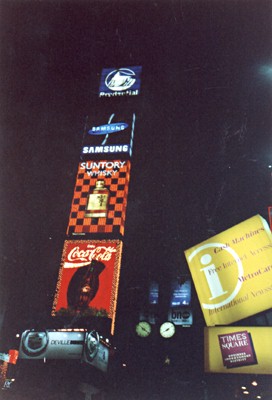All Nonfiction
- Bullying
- Books
- Academic
- Author Interviews
- Celebrity interviews
- College Articles
- College Essays
- Educator of the Year
- Heroes
- Interviews
- Memoir
- Personal Experience
- Sports
- Travel & Culture
All Opinions
- Bullying
- Current Events / Politics
- Discrimination
- Drugs / Alcohol / Smoking
- Entertainment / Celebrities
- Environment
- Love / Relationships
- Movies / Music / TV
- Pop Culture / Trends
- School / College
- Social Issues / Civics
- Spirituality / Religion
- Sports / Hobbies
All Hot Topics
- Bullying
- Community Service
- Environment
- Health
- Letters to the Editor
- Pride & Prejudice
- What Matters
- Back
Summer Guide
- Program Links
- Program Reviews
- Back
College Guide
- College Links
- College Reviews
- College Essays
- College Articles
- Back
Human Attention Span: Shorter than a Goldfish
It’s four o’clock and everything is done, there is nothing on the TV, and you are stuck home. What is the first thing you do? The answer for 70% of people is to take out their phones and either go on social media or play a game. The urge and response to a lack of stimuli without a phone has changed the human race drastically. The “power devices” in the pockets of millions has reduced the attention span of the average human from 12 seconds in 2000 to 8 seconds in 2015. This means that our ability to focus on a single concept is lower than that of the notoriously absent-minded goldfish.
5/31/15
The study of the decline in human attention is not specific to just a small group of individuals. In fact, Microsoft completed the study of human attention span after surveying 2,000 peo3ple and monitoring 112 individuals brain activity. As previously mentioned, there was a substantial decline in the amount of time humans can concentrate on the average project. The decrease in the past three quarters of a score has major implications for an individual. When people have this constant digital pressure and the need for new sensations of inputs such as notifications or newsfeeds, the result is a crippling in work output. From those surveyed, the results stated that 44% of people said that it was hard to concentrate on tasks and 37% of those surveyed state that their distraction and inability to work has caused them to work overtime or on the weekends. This need to work more time than should be required has had lives of individual radically changed. Instead of relaxing on the weekend or after the average workday, people now have to stay later and interrupt their free time. This makes them arrive home later from work but still having to the same amount of work waiting for them at home, promoting a lack of sleep because they stay up later. The lack of sleep then makes the individual tired the next day and less productive, making the inability to work a progressive downward spiral. This spiral does not only affect the individual but the company as well. When a number of workers have low attention spans, the company profits suffer because they cannot finish products as proposed and the business loses customers.
With all the negatives that accompany the constant usage of cell phones and technology, there is a positive side to the situation. Along with the degradation of the attention span of the average humans there was an increase in the productivity through multitasking. Normally, the human brain cannot perform well and concentrate on a number of activities happening simultaneously. But with the advent of cell phones and the notifications that accompany them has increased the ability to perform multiple tasks at once. This seems to make sense when taken into context, while talking on a cell phone, a person may browser other apps such as email or social media taking in both the text of social media and audio from the phone call. These improvements to multiple processes still utilize the attention span and thus are subject to the 8 seconds on which a human can focus on the multitasking.
Over the last 15 years, the ability for humans to focus has significantly decreased. The decrease, which has arisen from the use of cell phones and other modern technologies, means that people are less productive. This decrease in productivity means that companies are now losing money due to the amount of work done during normal business hours. One positive coming from the use of cell phones is the increase in the capability to do multiple tasks at the same time. With the increase in multitasking, there is an assumption that people would be more efficient with their time because they can perform more tasks, but this is not true because of the decrease in the attention span of individuals. Even though the ability to perform multiple tasks has increased over the year, each task follows eight seconds of concentration meaning there is no increase in productivity. Leaving everyone with the question; Is the cellphone worth it?

Similar Articles
JOIN THE DISCUSSION
This article has 0 comments.
